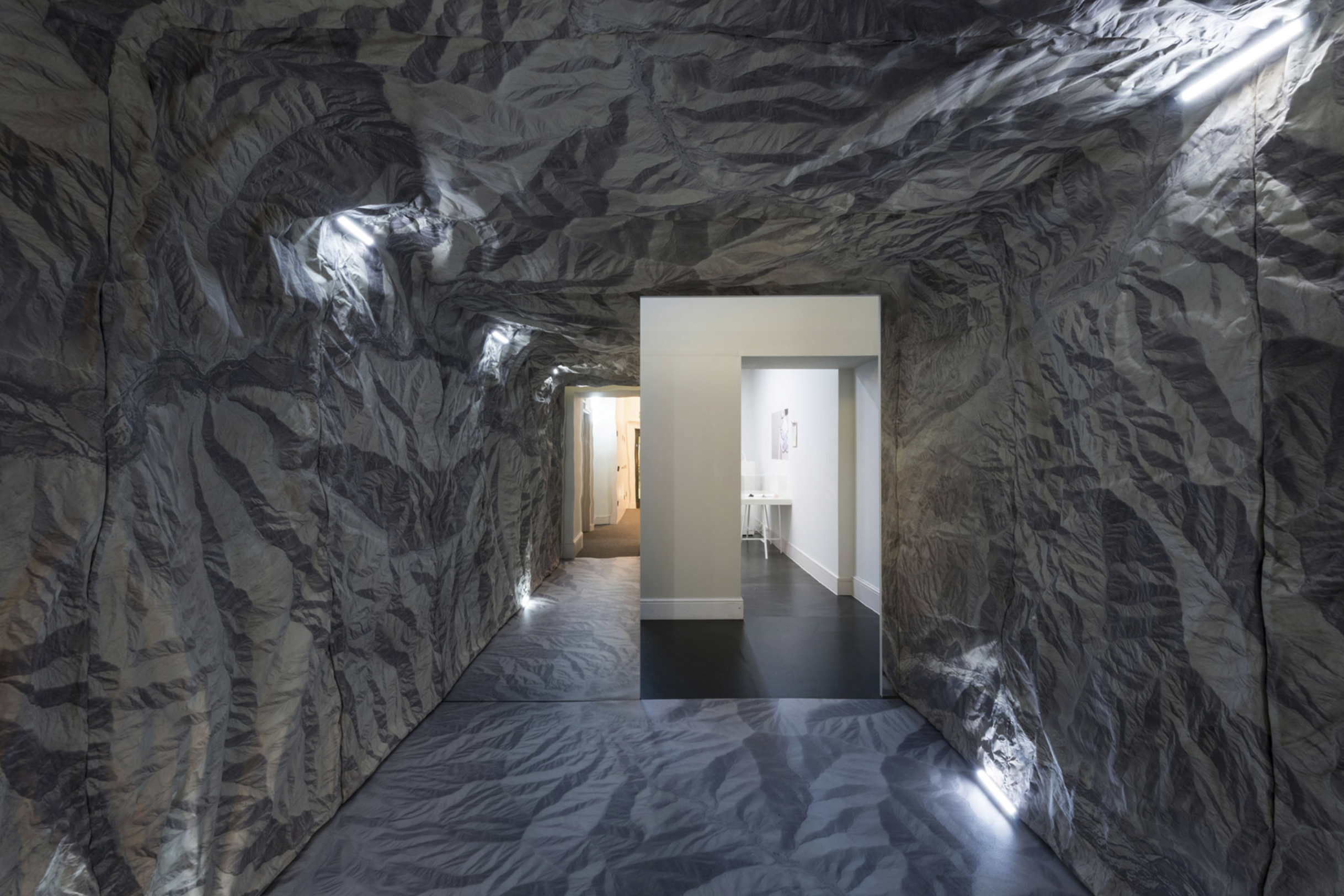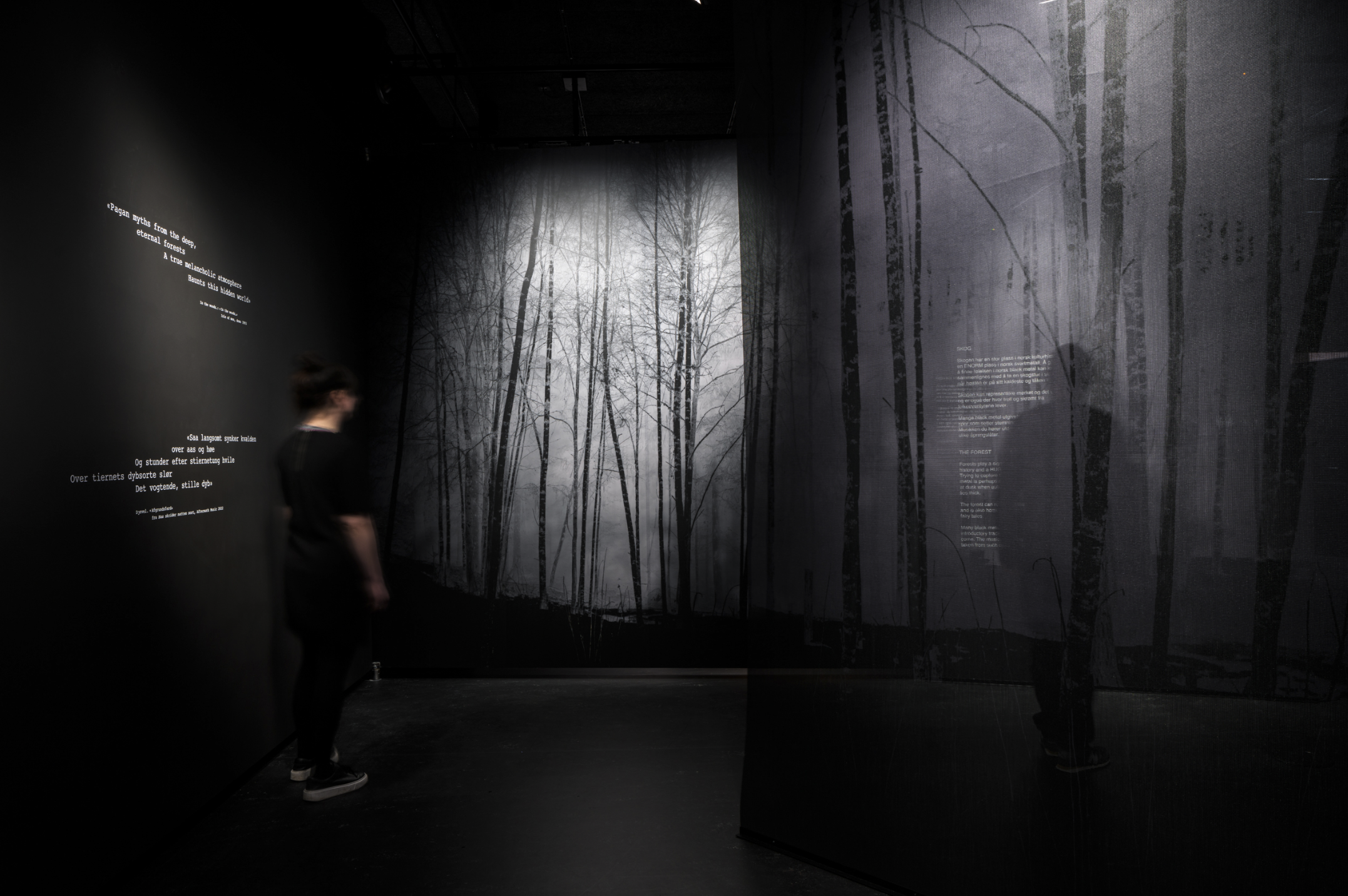Creating Awe-inspiring Experiences in Museums

I am standing in front of a giant sequoia tree whose trunk reaches upwards further than the eye can see. Below, bright green moss covers the forest floor and curved roots protrude in places then disappear back into the soil. As I breathe out, I see carbon dioxide escaping from my mouth as small colourful bubbles of pink and blue light. Around me other peoples’ breath appears in the same way. Simultaneously, the hollow tree releases oxygen as strands of light that shoot up out of the ground beneath. We play with the light bubbles and strands with our hands. They intermingle with each other all around us until we are totally immersed in this magical world of colourful forms of light as everything else fades away.
This is ‘We live in an ocean of air’ by Marshmallow Feast, a VR experience at the Saatchi gallery which explores the symbiotic relationship between humans and trees, as we quite literally rely on each other’s exhalations to survive. I leave the exhibition feeling totally awestruck by what I have just experienced.

About a year ago, I was listening to a podcast - an interview with psychologist Dacher Keltner about a book he’d just written, called ‘Awe: The New Science of Everyday Wonder and How it Can Transform Your Life’. Feeling awe, he asserts, is a positive emotion with significant psychological effects that increase our sense of well-being. In a review paper by Dacher Keltner and Maria Monroy, they conclude that ‘Awe engages five processes—shifts in neurophysiology, a diminished focus on the self, increased prosocial relationality, greater social integration, and a heightened sense of meaning—that benefit well-being.’ Experiencing awe can make us happier, healthier and kinder people.
So, what makes you feel awe? My mind automatically leaps to those clichéd moments - that feeling I have standing on top of a mountain looking out onto the world beneath or in front of the ocean taking in its vastness. But Keltner proposes there are in fact 8 different ways to feel awe, and nature is only one of them. Not only that, but we can find awe in the everyday both by paying attention to our surroundings and by actively seeking it out. A little weed that has survived against the odds, forcing its head through the crack between paving slabs, has just as much power to inspire awe as an epic landscape might.
The eight ‘wonders of life’ in which people find experiences of awe that Keltner has identified are: ‘the moral beauty of others, nature, collective movement, music, visual design, spirituality and religion, big ideas, and the cycle of life and death’. When we reflect on this, it’s easy to see why -the list brings to mind countless examples: the goosebumps we get from music that moves us, a compelling artwork that fills us with wonder, that moment of epiphany when we hear a new idea, or the electric energy of a crowd moving in unison together at a gig. And of course, what makes us feel awe will be different for different people. For some of us, one of these aspects may resonate more deeply than others.

An exhibition we are currently working on for a visitor centre in a national park, tells stories of its surrounding landscape. As we started exploring the content for the exhibition, we felt wowed by the uniqueness of the national park and the nature within it, from volcanic lava eruptions to the rare species of moss found in its central lake and the suffocating swarms of midges that invade the sky in the summer months.
As we wondered how best to bring these awe-inspiring moments into the exhibition, it occurred to me that there were many other opportunities to inspire awe in the visitor, not just through nature. In fact, when we delved deeper, it was possible to include all 8 categories that Dacher specified. As a team we considered this together and drew out a number of stories and experiences that could be integrated into the exhibition.
- the moral beauty of others: a documentary film about nature conservation and protection;
- nature: a tactile, sensory display of plants and rocks
- collective movement: interactive games that visitors can play together;
- music: a soundscape of atmospheric music inspired by the landscape;
- visual design: an art installation inspired by the landscape;
- spirituality and religion: stories of folklore, about spirits that live in the natural environment;
- big ideas: physical models explaining the invisible forces beneath the Earth’s surface;
- the cycle of life and death: infographics of the ecosystem, highlighting the intricate balance between life and death
It makes sense that by incorporating more elements that evoke feelings of awe, we can create a more powerful experience. But beyond that, according to the research, it can also improve our well-being. Museums, art galleries, and heritage sites are ideal environments to cultivate these moments of awe. And perhaps, by combining different types of awe-inspiring experiences into a single exhibit or moment, the impact could be even more profound.

When I consider some exhibitions that have particularly moved me, I recognise they often do just that. For example, an exhibition at the Guggenheim in New York showcasing Kandinsky’s work, the beauty and colour of which alone inspired me with awe. As I stood in front of a specific artwork, the audio guide narrated the story it told, combining art with religion, death, and the concept of an apocalypse. For another artwork inspired by jazz, I listened to a piece of music as I gazed upon the art. These additional elements made the experience more wondrous for me. Similarly, was the exhibition ‘We live in an ocean of air’ so impactful because it combined many types of awe, including nature, visual design, music, collective movement, death and a big idea, encouraging philosophical thought about our interconnectedness with nature?
So, next time you are creating a museum or exhibition experience, why not start by asking: How can we inspire awe? What stories, content, interactives or experiences might leave visitors feeling not only awestruck, but also uplifted and more connected to others and the world around them, not only as they leave but in their longer-term memories of what they’ve seen and experienced?

Sources
Maria Monroy and Dacher Keltner, Awe as a Pathway to Mental and Physical Health, Perspectives on Psychological Science, Volume 18, Issue 2, March 2023
Edward Posnett, Awe by Dacher Keltner review – the transformative power of wonder, Guardian, 5 Jan 2023

